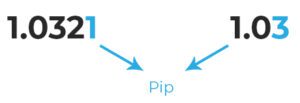All The Important Measures?
Deaching of the great explorer of the truth the builder
-
BEGINNER LEVEL

-

All The Important Measures
Lots and Pips are the main topics of this chapter.
Lots
Lots are a simple enough concept. They are basically groups of units. A standard lot means 100,000 units of a currency. So if you buy a lot of USD, it is $100,000 that we’re talking about. Lots do come in other sizes too though.
That’s the easy part done. Now to move on to the slightly tricky bit; pips and pipettes, and how to calculate them.
Pip and Pipette
In 1.3974 the 4 is the pip value.
It may seem like the smallest most insignificant value and sure, in this one unit of currency it is. But that is why we have lots.
A .0001 increase in a currency’s value when multiplied with 100,000 units makes a decent number. And anyway, you will probably not be selling after a 0.0001 increase. That is the minimum profit that you can make with an increase in pip value. There is in fact an even smaller measure-the pipette.
Most quotes are priced with 4 decimal places, though some go to only 2. So whether it looks like 1.0123 or 1.01, the last decimal place in both is a pip. This is because form the 2nd and 4th decimal positions.
Now if it were 1.01234 i.e. a quote with a value of 5 decimal places, then the 5th one is the pipette, in this example the number 4.
If, however, your broker prices quotes with 5 and 3 decimal places instead of the regular 4 and 2 then
Pipettes are fractional pips and in value are equal to 1/10th of a pip- much smaller than a pip basically. So when we said there are even smaller values than pips, we were only telling the truth. This might be a little discouraging for upcoming traders to see how small the profits can be, but it might actually not be a bad idea to get all the disillusionment out of the way right now. Like any other job Forex trading is work and you need to learn and be consistent to get somewhere with it.
How to calculate a pip?
In order to do that you need to first learn how to read pip values. There is a little more to it than we let on before. Revise the concept of unit, tens, hundreds in your mind first. Now look at the figure below
1.12345
You can see that there are five decimal points which means the last digit represents the pipette. We know that 1 pipette is 1/10th of a pip unit. Or 1 pip = 10 pipette.
So the 5th digit, the number 5, is a pipette. It cannot occupy the unit place in the division since that is 0.5 pip. So now look at the labeled figure below
- Ten thousand
- Thousand
- Hundred
- Ten
- Unit
- Pipette
So in this figure at the Tens place there are 30 pips, at the hundreds place there are 200, and so on. To simplify it in your head you can see it as a basic unit value of a currency being made of thousands of pips. We need this kind of small division so that fluctuations can be traced.
To calculate how a change in pip value affects your profits, look at the example below.
EUR/USD 1.1214
If you’re trading a standard lot of EUR at this rate your contract price can be calculated through the following equation
So for $112,100 you can buy €100,000.
Now if the exchange rate changes from 1.1210 to 1.1215 then calculating the value using the same equation we get
100,000(EUR) x 1.1215 =112,150 USD
The rate rose 5 pips (from 1.1210 to 1.1215)
This is how a change in the pip value equals $50 overall.
All this might seem to be mind boggling, but we assure you once you start working with these numbers, they start to make sense. To ease the tension a little, let’s move on to a fairly simple topic that you might already know a lot about; Margin Trading.











